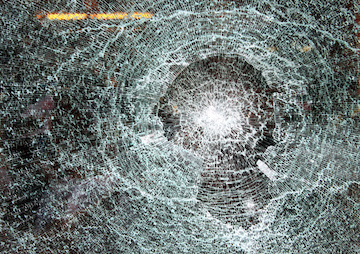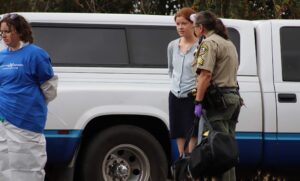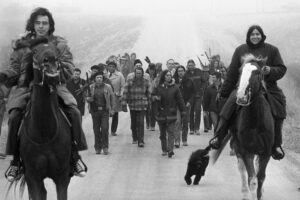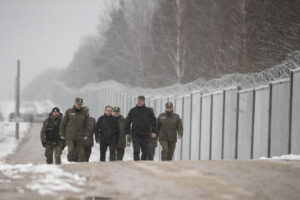Welcome to Cop Land
If you’ve been listening to various police agencies and their supporters, then you know what the future holds: Anarchy is coming -- and it’s all the fault of activists. Chris Huggins / CC BY 2.0
1
2
3
4
Chris Huggins / CC BY 2.0
1
2
3
4
Even the idea that the police shouldn’t sport the look of an occupying army in local communities has, however, been met with fierce resistance. Read, for example, the online petition started by the National Sheriffs’ Association and you could be excused for thinking that the Obama administration was aggressively moving to stop the flow of military-grade equipment to local and state police agencies. (It isn’t.) The message that tops the petition is as simple as it is misleading: “Don’t strip law enforcement of the gear they need to keep us safe.”
The Obama administration has done no such thing. In May, the president announced that he was prohibiting certain military-grade equipment from being transferred to state and local law enforcement. “Some equipment made for the battlefield is not appropriate for local police departments,” he said. The list included tracked armored vehicles (essentially tanks), bayonets, grenade launchers, camouflage uniforms, and guns and ammo of .50 caliber or higher. In reality, what use could a local police department have for bayonets, grenade launchers, or the kinds of bullets that resemble small missiles, pierce armor, and can blow people’s limbs off?
Yet the sheriffs’ association has no problem complaining that “the White House announced the government would no longer provide equipment like helicopters and MRAPs [mine-resistant ambush-protected vehicles] to local law enforcement.” And it’s not even true. Police departments can still obtain both helicopters and MRAPs if they establish community policing practices, institute training protocols, and get community approval before the equipment transfer occurs.
“Helicopters rescue runaways and natural disaster victims,” the sheriff’s association adds gravely, “and MRAPs are used to respond to shooters who barricade themselves in neighborhoods and are one of the few vehicles able to navigate hurricane, snowstorm, and tornado-strewn areas to save survivors.”
As with our wars abroad, think mission creep at home. A program started to wage the war on drugs, and strengthened after 9/11, is now being justified on the grounds that certain equipment is useful during disasters or emergencies. In reality, the police have clearly become hooked on a militarized look. Many departments are ever more attached to their weapons of war and evidently don’t mind the appearance of being an occupying force in their communities, which leaves groups like the sheriffs’ association fighting fiercely for a militarized future.
Legal Plunder
In July, the American Civil Liberties Union and the ACLU of Arizona sued law enforcement in Pinal County, Arizona, on behalf of Rhonda Cox. Two years before, her son had stolen some truck accessories and, without her knowledge, fitted them on her truck. When the county sheriff’s department arrested him, it also seized the truck.
Arriving on the scene of her son’s arrest, Cox asked a deputy about getting her truck back. No way, he told her. After she protested, explaining that she had nothing to do with her son’s alleged crimes, he responded “too bad.” Under Arizona law, the truck could indeed be taken into custody and kept or sold off by the sheriff’s department even though she was never charged with a crime. It was guilty even if she wasn’t.
Welcome to America’s civil asset forfeiture laws, another product of law enforcement’s failed war on drugs, updated for the twenty-first century. Originally designed to deprive suspected real-life Scarfaces of the spoils of their illicit trade — houses, cars, boats — it now regularly deprives people unconnected to the war on drugs of their property without due process of law and in violation of the Fifth and Fourteenth Amendments. Not surprisingly, corruption follows.
Federal and state law enforcement can now often keep property seized or sell it and retain a portion of the revenue generated. Some of this, in turn, can be repurposed and distributed as bonuses in police and other law enforcement departments. The only way the dispossessed stand a chance of getting such “forfeited” property back is if they are willing to take on the government in a process where the deck is stacked against them.
In such cases, for instance, property owners have no right to an attorney to defend them, which means that they must either pony up additional cash for a lawyer or contest the seizure themselves in court. “It is an upside-down world where,” says the libertarian Institute for Justice, “the government holds all the cards and has the financial incentive to play them to the hilt.”
In this century, civil asset forfeiture has mutated into what’s now called “for-profit policing” in which police departments and state and federal law enforcement agencies indiscriminately seize the property of citizens who aren’t drug kingpins. Sometimes, for instance, distinctly ordinary citizens suspected of driving drunk or soliciting prostitutes get their cars confiscated. Sometimes they simply get cash taken from them on suspicion of low-level drug dealing.
Dig, Root, GrowThis year, we’re all on shaky ground, and the need for independent journalism has never been greater. A new administration is openly attacking free press — and the stakes couldn’t be higher.
Your support is more than a donation. It helps us dig deeper into hidden truths, root out corruption and misinformation, and grow an informed, resilient community.
Independent journalism like Truthdig doesn't just report the news — it helps cultivate a better future.
Your tax-deductible gift powers fearless reporting and uncompromising analysis. Together, we can protect democracy and expose the stories that must be told.
This spring, stand with our journalists.
Dig. Root. Grow. Cultivate a better future.
Donate today.








You need to be a supporter to comment.
There are currently no responses to this article.
Be the first to respond.